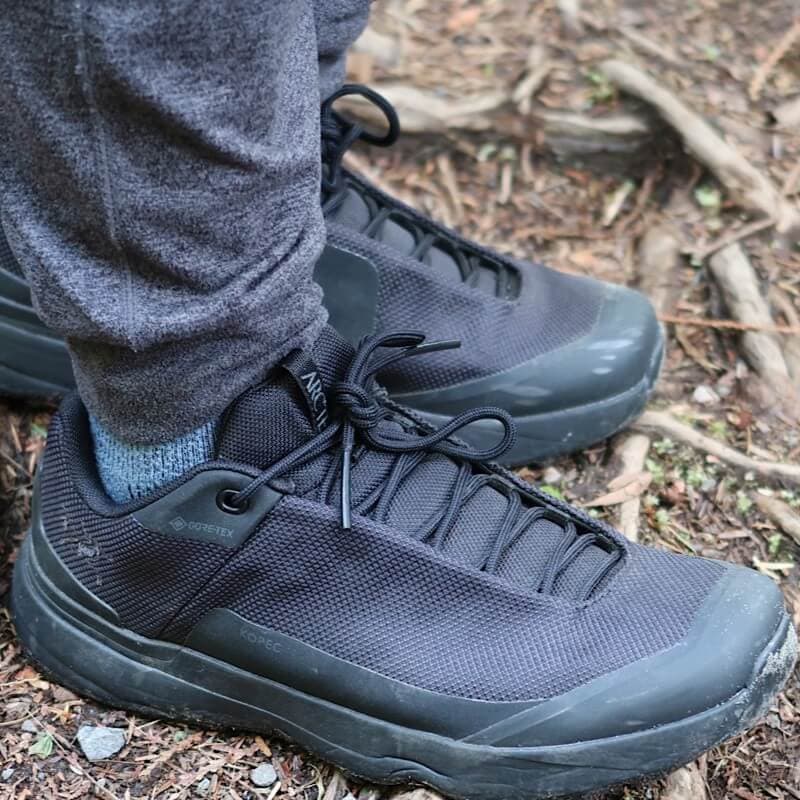Best Shoes for Olympic National Park Trails, Towns & Beaches

Hiking in Olympic National Park means walking over roots, slick wood, mud, pebbles, and sand.
For years, I trusted the ankle support and protective leather of hiking boots, which felt like armor on my feet.
But after talking with a gear expert, I learned the outdoor industry is shifting — moving away from bulky boots toward trail-runner-inspired hiking shoes. So, I decided to try something new.
To my surprise, not only did my feet stay dry after stomping through puddles and walking Kalaloch Beach in the rain, but the Gore-Tex mesh cleaned up easily, and sand didn’t stick.
Keep reading to find out why I don’t regret the switch — and why I now believe one great pair of hiking shoes can handle nearly everything Olympic throws at you.
Best Shoes for Olympic
Waterproof hiking shoes let you stay out longer and explore more — rain or shine — without the weight of a boot.
➜ Premium Pick (What I Wear)
➜ Best Under $150
My Top Shoe Pick for Olympic National Park
If you want just one pair of shoes that can handle forest slogs, rocky beaches, and alpine viewpoints, go for a waterproof, low-cut hiking shoe with good tread.
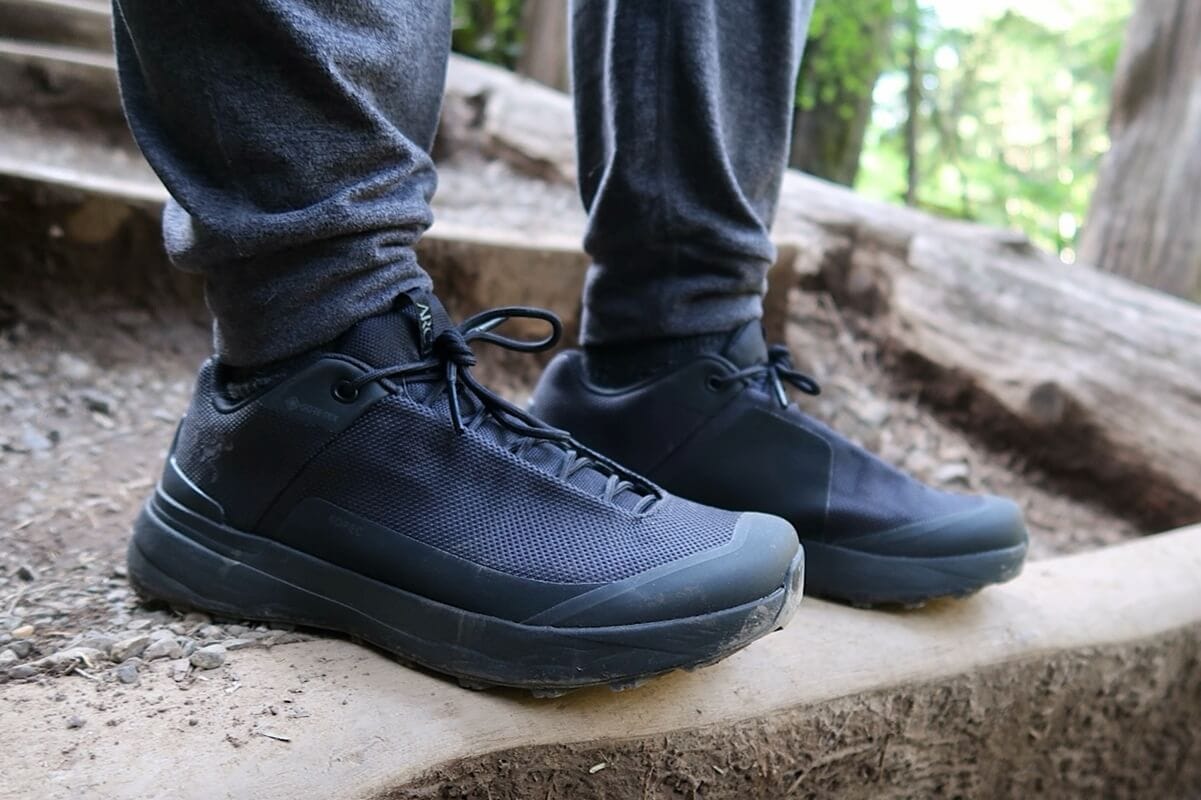
These shoes won me over fast. I hiked in them every day on a long weekend trip straight out of the box and didn’t get any blisters.
They’re lighter than anything I’ve worn before, so they were comfortable to wear while traveling and sightseeing.
Why I love them:
- Waterproof but breathable
- Excellent tread for slick surfaces and gravel
- Supportive enough for forest roots but light enough for all-day wear
- Stylish enough to wear on the plane or in shops
If my top pick isn’t available or is pricier than you want to spend, look for something similar: a waterproof, all-terrain hiking shoe.
My go-to hiking shoe — handles all terrain and looks good in town.
Why I Made the Change from Hiking Boots to Hiking Shoes
For four years, I wore the Oboz Bridger Mid — a classic mid-height boot with waterproof leather.
They got me through the long, muddy slog to Shi Shi Beach and the steep rock scramble on Mount Storm King, where traction and stability really matter.
I still love my boots and would wear them again on challenging, high-alpine hikes.
But after years of use, I started to wonder if something lighter and more versatile could work just as well. When I pulled them out this spring to clean and re-waterproof them, I looked at the worn tread and thought: Are these boots still right for me?
That’s when I started seriously considering the kind of hiking shoes I saw at Brown’s in Port Angeles — lighter, more flexible, but designed to perform on Olympic National Park trails.
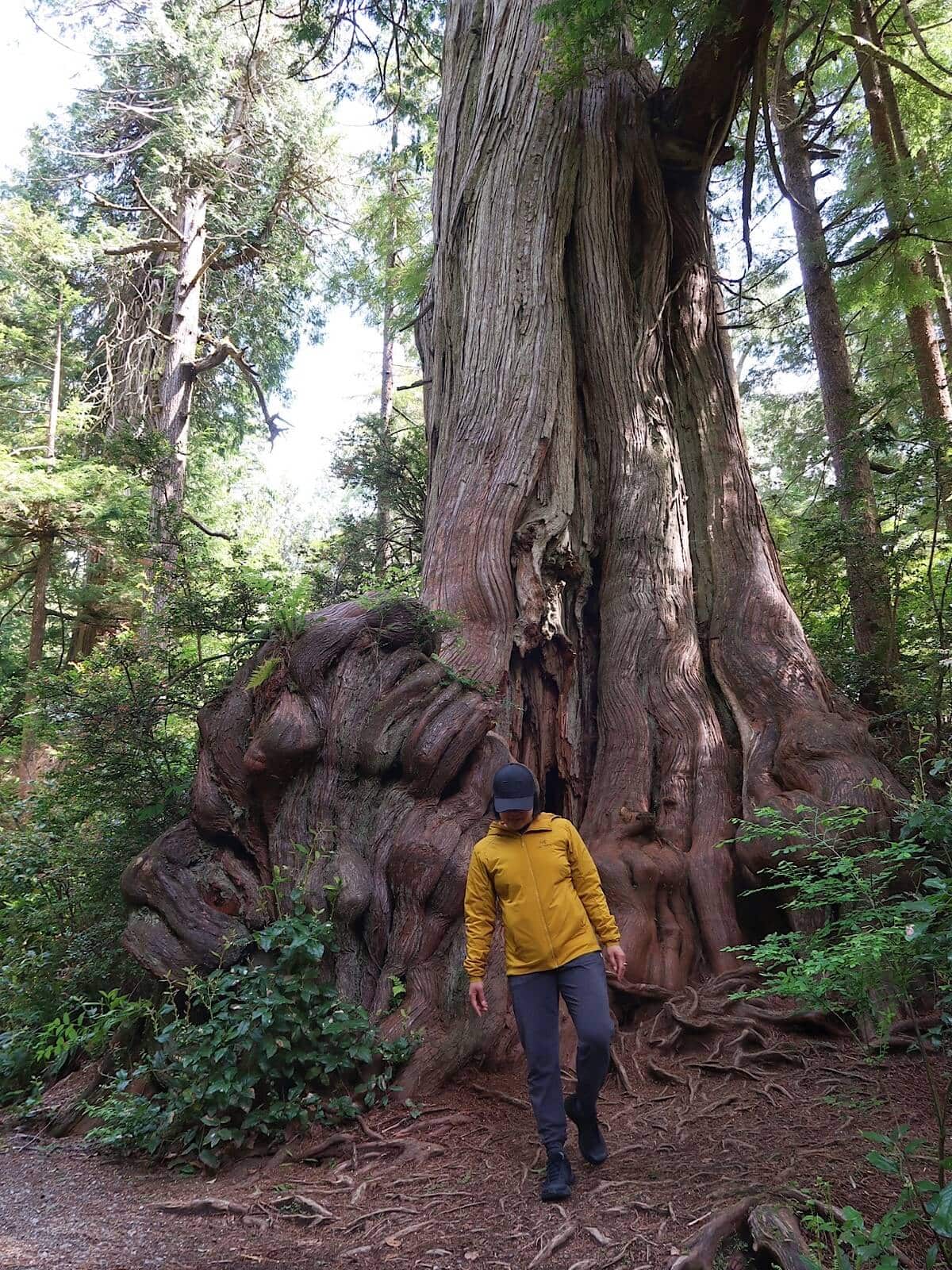
What Makes a Shoe Work for Olympic’s Diverse Terrain
Just this past weekend, I climbed rock and wood steps to reach the Marymere Falls viewpoint, navigated mud and tree roots on the Hall of Mosses Trail, and walked across sand, pebbles, and driftwood on Kalaloch beaches.
Olympic National Park is renowned for its diversity. But its varied terrain also makes it a challenge to know what to pack.
Footwear that performs well on rainforest, coastal, and high-elevation trails needs to hit a few non-negotiables:
- Traction: You’ll want grippy soles for slick roots, wet rocks, and beach pebbles.
- Waterproofing: Expect puddles, rain, and stretches of mud — even in summer.
- Support & Stability: Most trails have uneven surfaces, and a solid base can make all the difference.
Bonus if it’s versatile: What I love about my shoes is that I can wear them from trail to town without needing a second pair.
Your footwear matters here — not just for comfort but also for safety, enjoyment, and ensuring you don’t have to turn around because your socks are soaked or your feet are hurting.
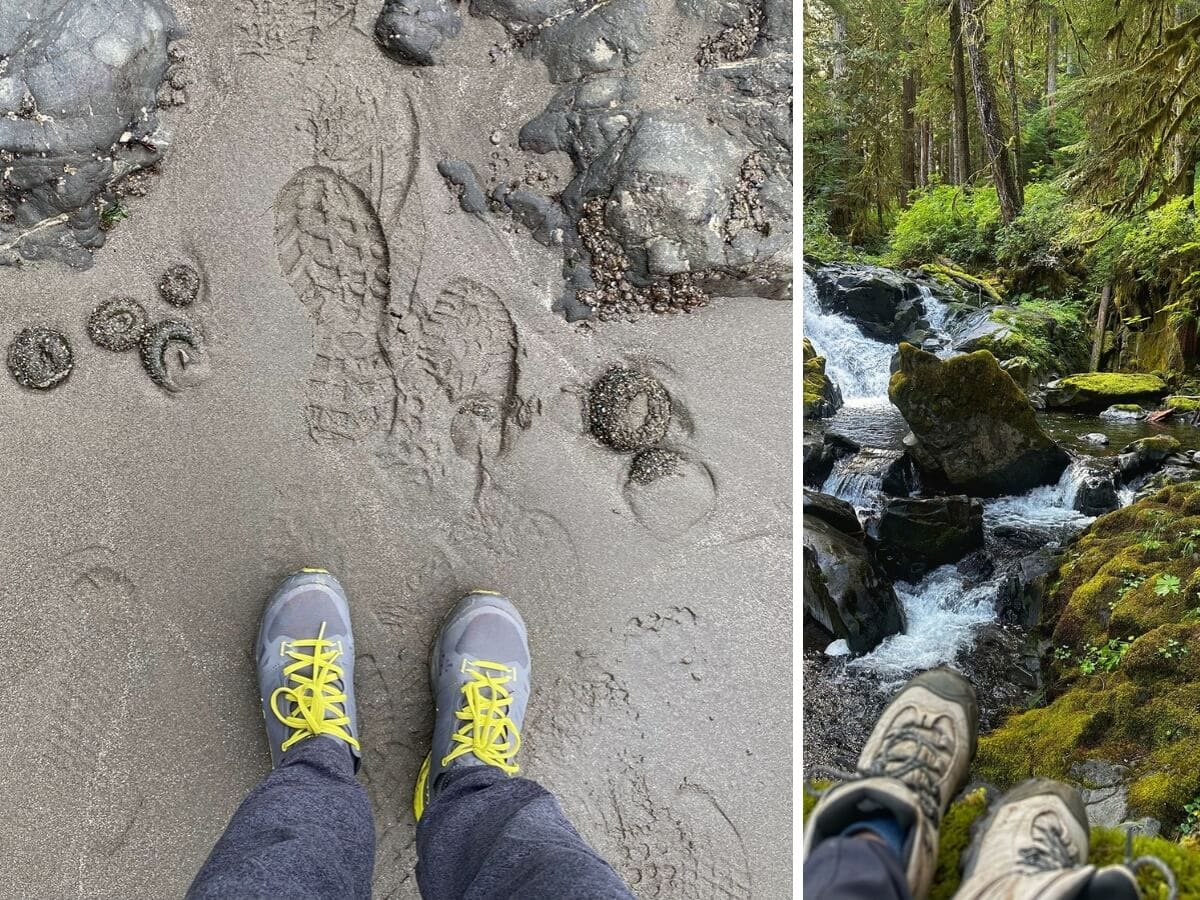
Hiking Shoes, Boots & Trail Runners: What to Know
I’ve worn all three styles over the years. While each has its place, the best choice depends on your comfort level, where you’re going, and what conditions you expect.
What matters most is how your feet feel when the rain starts, the temperature drops or the trail gets steep.
Will your chosen shoe give you the confidence to keep going?
Hiking Shoes
This is the shoe I recently converted to — and if I had to pick just one for Olympic, this would be it.
Pros:
- Light on your feet but protective
- Waterproof models available
- Great for muddy trails, rocky beaches, and even walking through town
Cons:
- Less ankle support than a boot
- Some styles may not keep out trail debris without gaiters
Hiking shoes offer the best of both worlds for most travelers — rugged enough for forest and coastal trails yet versatile enough to wear on the plane.
Hiking Boots
Boots were my go-to for years. I trusted their ankle support and loved how protected my feet felt in rain and mud.
Pros:
- Excellent stability for uneven terrain
- Great for backpacking or high-mileage
- Ideal for rugged hikes and slick descents
Cons:
- Heavier and bulkier
- Overkill for short, easy hikes or beaches
Some people will always prefer a boot — and that’s okay. If ankle support gives you confidence, don’t ignore that.
Trail Runners
I wore breathable, feather-light trail runners on Second Beach. Lucky for me, it wasn’t raining that day.
Pros:
- Ultra-lightweight and breathable
- Comfortable right out of the box
- Great for summer hiking on hot days
Cons:
- Often not waterproof
- Minimal support and protection
- Can wear down faster
If you’re used to this style or plan on doing long, dry hikes, trail runners can work — but only if you’re confident navigating slippery terrain and unexpected mud.
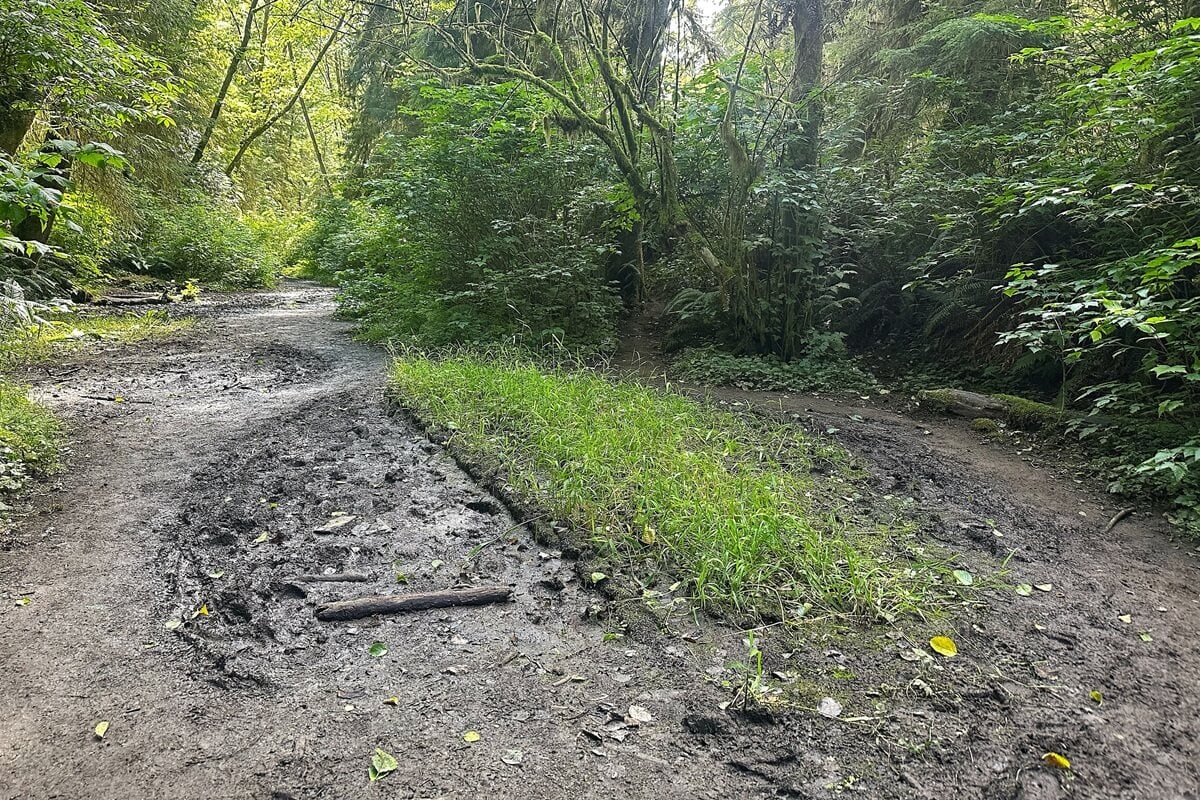
When You Might Want a Second Pair
While one pair of good hiking shoes can be enough for most Olympic trips, there are a few scenarios where a second pair makes things more comfortable — or makes more sense.
Tidepooling or Creek Crossings
If you plan to explore areas like Rialto Beach or Point of Arches at low tide, throwing a pair of sandals (like Tevas or Chacos) into your backpack makes it easier to cross water.
Camping or RV Trips
A slip-on shoe is perfect at the end of the day. I bring a lightweight pair of slides for hanging out around the campsite.
Winter or Early Spring Trips
If you’re heading to Hurricane Ridge when snow is present, you’ll want insulated, waterproof boots and possibly microspikes for traction.
If one of these scenarios applies to you, it’s worth considering packing extra footwear.
Just don’t feel like you need to bring three pairs “just in case” when one solid choice covers a lot.
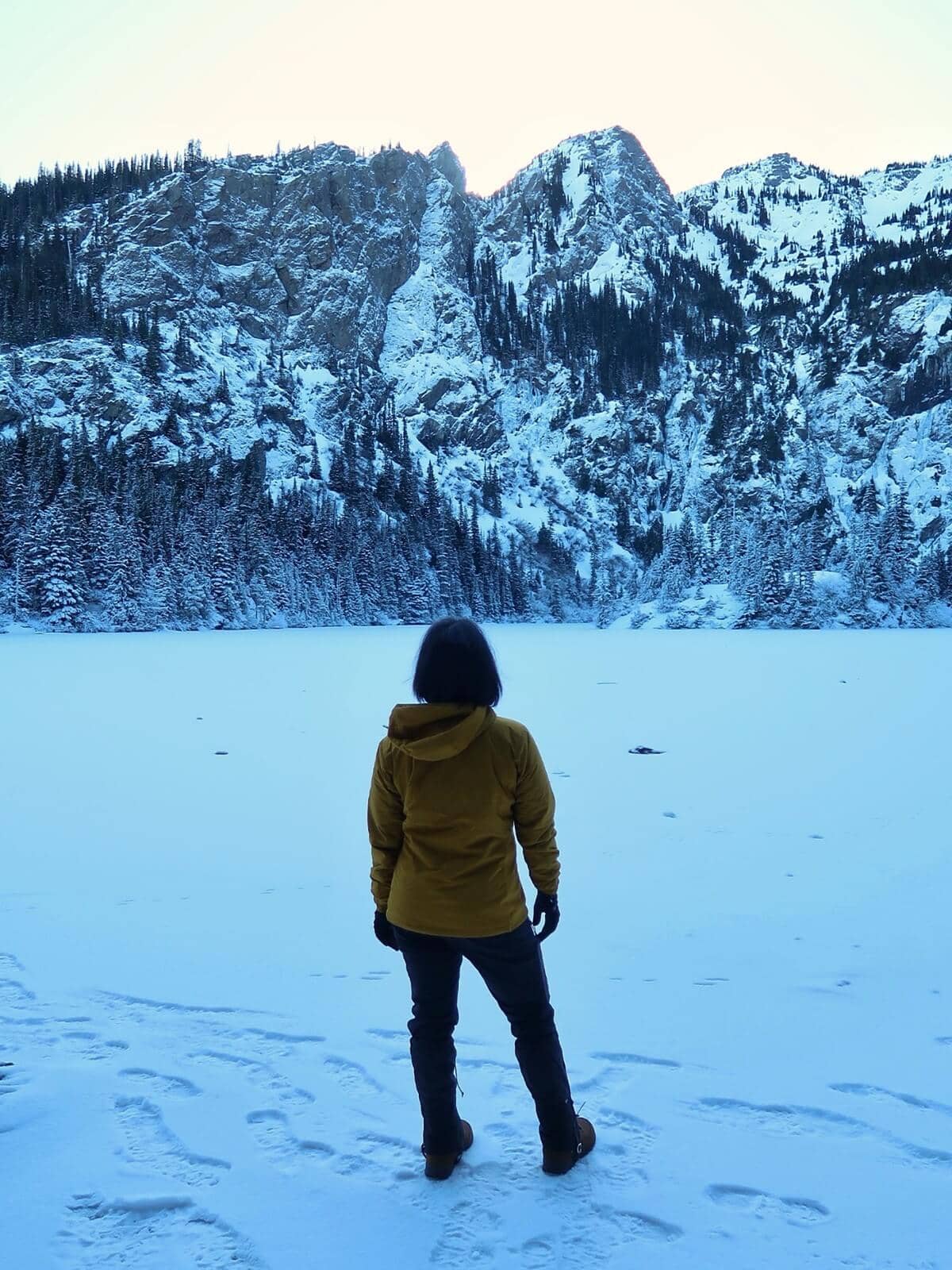
What Not to Bring
Not all shoes are sufficient for Olympic’s trails, even if they seem okay at first glance. Here’s what I’d leave at home:
- Everyday sneakers: They soak through quickly and lack the tread needed for roots, rocks, and mud.
- Slip-ons or Crocs: Easy to pack and great for campsites, but not secure enough for uneven terrain — especially if they get wet.
- Fashion hiking boots: They look the part but often lack real traction and waterproofing.
- Flip-flops: Fun for the hotel hot tub, not for rugged beaches or rainforest boardwalks.
Casual footwear in Olympic means wet socks, rolled ankles, and hikes cut short.
My go-to hiking shoe — handles all terrain and looks good in town.
One Shoe to Rule Them All
I used to pack multiple pairs of shoes on RV trips—boots for trails, slip-ons for driving, trail runners for the beach—just because I had the space.
But after hiking in rain-soaked forests, crossing rocky shores, and grabbing dinner in Forks all in the same pair, I no longer need to.
The Arc’teryx hiking shoe I now wear hits every mark. They give me the confidence to stay out longer and explore more, no matter the terrain or weather, yet they’re low-profile enough that I can wear them out to eat or on travel days.
They’re not cheap. But if you’re only packing one pair of shoes — and you want that pair to perform on trail and in town — they’re worth every dollar.
Best Shoes for Olympic
Waterproof hiking shoes let you stay out longer and explore more — rain or shine — without the weight of a boot.
➜ Premium Pick (What I Wear)
➜ Best Under $150
RELATED TRIP PLANNING POSTS:
➥ Plan Your Perfect Trip to Olympic National Park (Start Here!)
➥ 7 BEST Towns Near Olympic National Park Worth Visiting!
➥ 21 Places To Stay Near Olympic National Park (By a Local!)
➥ 10 BEST Summer Day Hikes on the Olympic Peninsula
➥ 13 BEST Beaches on the Olympic Peninsula
➥ 2 Day Olympic National Park Itinerary (Easy & Efficient!)
➥ Olympic National Park Day Trip (Best 1-Day Itineraries!)
➥ What to Pack for Olympic National Park (All Year!)
➥ Best Shoes for Olympic National Park Trails, Towns & Beaches
➥ Olympic National Park Visitor Center: 7 Reasons to Stop
SEASONAL TRAVEL POSTS:
➥ Fall in Olympic National Park (11 Best Things to Do!)
➥ Winter in Olympic National Park: 7 Things to Do + What’s Open

